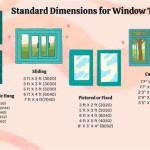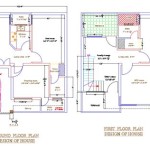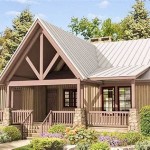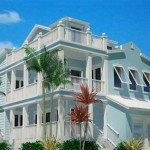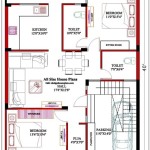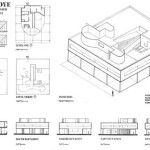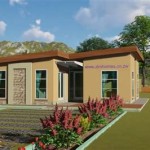Clubhouse Layout Plan: Optimizing Space for Functionality and Member Experience
A well-designed clubhouse layout plan is crucial for creating a welcoming, functional, and enjoyable environment for members. It considers various factors, including available space, membership demographics, program offerings, and operational efficiency. A thoughtful layout enhances the overall member experience, fosters a sense of community, and supports the long-term success of the clubhouse. This article will explore key considerations for developing an effective clubhouse layout plan, focusing on optimizing space for functionality and member experience.
The development of a comprehensive clubhouse layout plan typically involves a multi-stage process, starting with a needs assessment. This assessment should incorporate feedback from members, staff, and stakeholders to understand current usage patterns, identify areas for improvement, and anticipate future needs. A detailed site analysis is equally important, evaluating the existing infrastructure, lot size, topography, and potential environmental factors. These assessments inform the development of conceptual plans, which are refined based on cost considerations, building codes, and accessibility requirements.
Ultimately, the goal is to create a layout that balances functionality, aesthetics, and cost-effectiveness, ensuring that the clubhouse serves as a valuable asset for its members and the community.
Prioritizing Functional Zones and Circulation
One of the primary objectives of a clubhouse layout plan is to define distinct functional zones that cater to the diverse needs of members. These zones may include: a reception area, a social lounge, dining facilities, fitness centers, activity rooms, administrative offices, and outdoor amenities. The effective placement and design of these zones are essential for maximizing space utilization and creating a seamless flow of movement within the clubhouse.
The reception area serves as the first point of contact for members and visitors, and its layout should be welcoming and efficient. It typically includes a reception desk, seating areas for waiting, and informational displays. The design should facilitate easy access to other parts of the clubhouse. Proper lighting and clear signage are critical components of a welcoming reception area. Adequate space for queuing during peak hours should also be factored in to avoid congestion.
Social lounges are designed to foster interaction and relaxation. These areas should offer comfortable seating arrangements, appropriate lighting, and acoustic treatments to minimize noise levels. The layout should encourage conversation and provide opportunities for members to socialize and build relationships. Consideration should be given to the proximity of the social lounge to other amenities, such as dining facilities or activity rooms, to create a more integrated and dynamic environment.
Dining facilities play a vital role in many clubhouses, offering members convenient access to meals and refreshments. The layout of the dining area should consider the type of service offered, whether it is casual dining, formal dining, or a combination of both. Adequate seating capacity, efficient kitchen operations, and appropriate noise control measures are essential for creating a pleasant dining experience. The design should also incorporate accessibility features to accommodate members with disabilities.
Fitness centers are increasingly popular amenities in clubhouses, providing members with opportunities for exercise and wellness. The layout of the fitness center should be planned to optimize equipment placement, ensure adequate space for movement, and provide appropriate ventilation and lighting. Consideration should be given to the specific types of equipment offered, such as cardio machines, weightlifting equipment, and group exercise areas. Safety is paramount, and the layout should minimize the risk of injuries.
Activity rooms can be designed for a variety of purposes, such as arts and crafts, games, meetings, or educational programs. The layout of these rooms should be flexible and adaptable to accommodate different activities. Movable furniture, adequate storage space, and appropriate lighting and acoustics are essential for creating a versatile activity space. The design should also consider the specific needs of the activities that will be conducted in the room, such as ventilation for art studios or soundproofing for music rooms.
Administrative offices are necessary for managing the day-to-day operations of the clubhouse. The layout of the office area should prioritize efficiency, privacy, and security. Adequate workspace, storage space, and access to technology are essential for staff members. The design should also consider the proximity of the office to other areas of the clubhouse, such as the reception area and the financial office, to facilitate communication and coordination.
Outdoor amenities can significantly enhance the appeal of a clubhouse. These amenities may include swimming pools, tennis courts, playgrounds, gardens, and patios. The layout of the outdoor area should consider the available space, the climate, and the needs of members. The design should also incorporate accessibility features to accommodate members with disabilities. Safety is paramount, and the layout should minimize the risk of accidents.
Effective circulation patterns are crucial for ensuring a smooth and efficient flow of movement within the clubhouse. The layout should minimize bottlenecks and provide clear pathways to all areas. Corridors should be wide enough to accommodate foot traffic and wheelchair access. Signage should be clear and easy to read, guiding members to their desired destinations. Consideration should also be given to emergency exits and accessibility requirements.
Integrating Accessibility and Universal Design Principles
Accessibility is a fundamental consideration in clubhouse layout planning, ensuring that the facility is usable by individuals with a wide range of abilities. Integrating universal design principles from the outset promotes inclusivity and creates a more welcoming environment for all members. This involves considering aspects such as ramps, elevators, accessible restrooms, and adaptive equipment.
Ramps and elevators provide access to different levels of the clubhouse for individuals with mobility impairments. Ramps should have a gentle slope and a non-slip surface to ensure safe and easy access. Elevators should be spacious enough to accommodate wheelchairs and other mobility devices. Clear signage should indicate the location of ramps and elevators.
Accessible restrooms are essential for providing all members with comfortable and convenient facilities. These restrooms should include wider stalls, grab bars, and accessible sinks and toilets. The layout should also consider the needs of individuals with visual impairments, such as tactile signage. Regularly maintaining these facilities is critical to ensuring their usability.
Adaptive equipment can be incorporated into various areas of the clubhouse to accommodate individuals with specific needs. For example, adjustable-height tables can be used in dining areas or activity rooms to allow members to comfortably participate in activities. Assistive listening devices can be used in meeting rooms or performance spaces to improve audibility for individuals with hearing impairments. Providing a variety of options helps to ensure that all members can participate fully in the clubhouse environment.
Furthermore, the layout of the clubhouse should consider the needs of individuals with visual impairments. This includes providing adequate lighting, using high-contrast colors for signage, and installing tactile paving at transitions between different surfaces. Clear signage and wayfinding systems are also essential for helping individuals with visual impairments navigate the clubhouse independently.
Training staff on how to interact with and assist individuals with disabilities is also crucial. This training should cover topics such as disability awareness, communication techniques, and how to use assistive devices. By creating a culture of inclusivity and accessibility, the clubhouse can ensure that all members feel welcome and valued.
Optimizing Space for Flexibility and Future Growth
A well-designed clubhouse layout plan should not only meet current needs, but also anticipate future growth and changing demands. This requires incorporating flexibility into the design, allowing spaces to be easily adapted and reconfigured as needed. Consideration should be given to the potential for expanding existing facilities or adding new amenities in the future.
Multipurpose spaces are valuable assets in a clubhouse layout, as they can be used for a variety of activities. These spaces should be designed with flexibility in mind, incorporating features such as movable furniture, adaptable lighting, and modular partitions. This allows the space to be easily reconfigured to accommodate different events or programs. For example, a large room could be used for a meeting during the day and a social event in the evening.
Modular furniture can be easily rearranged and reconfigured to create different seating arrangements or activity areas. This type of furniture is particularly useful in multipurpose spaces, where the layout needs to be adaptable to different events or programs. Modular furniture can also be easily stored when not in use, maximizing space utilization.
Adaptable lighting systems allow the lighting levels and color temperatures to be adjusted to suit different activities or moods. This is particularly useful in multipurpose spaces, where the lighting needs to be versatile. Dimmable lights and adjustable spotlights can be used to create a variety of lighting effects. Natural light is also an important consideration, and the layout should maximize the use of natural light whenever possible.
Modular partitions can be used to divide large spaces into smaller, more intimate areas. These partitions can be easily moved or removed as needed, allowing the space to be reconfigured to accommodate different activities. Modular partitions can also be used to create temporary offices or meeting rooms.
In addition to incorporating flexibility into the design, it is important to consider the potential for future expansion. The layout should allow for the addition of new facilities or amenities without disrupting the existing operations of the clubhouse. This may involve reserving land for future development or designing the building in a way that allows for vertical expansion.
The layout should also consider the potential for incorporating new technology into the clubhouse in the future. This may involve providing adequate infrastructure for wireless internet access, installing smart building systems, or incorporating interactive displays. By anticipating future technological advancements, the clubhouse can remain a valuable asset for its members for years to come.
Ultimately, a successful clubhouse layout plan is one that balances functionality, aesthetics, and cost-effectiveness, while also incorporating accessibility, flexibility, and the potential for future growth. By considering these factors, the clubhouse can create a welcoming, functional, and enjoyable environment for its members.

Image Result For Residential Clubhouse Floor Plan

Community Club House With Manager S Apartment 6867

Clubhouse Plan

Clubhouse Model Layout Senior Living Options 55

7 Club House Designs Ideas Clubhouse Design How To Plan

Heron S Glenn Golf Clubhouse Lower Level Floor Plan

Clubhouse Floor Plan Design Gif Maker Daddygif Com See Description

Club House Plan Unique Plans

Luxury Home Clubhouse Floor Plan

Welcome To The Sawgrass Club House

